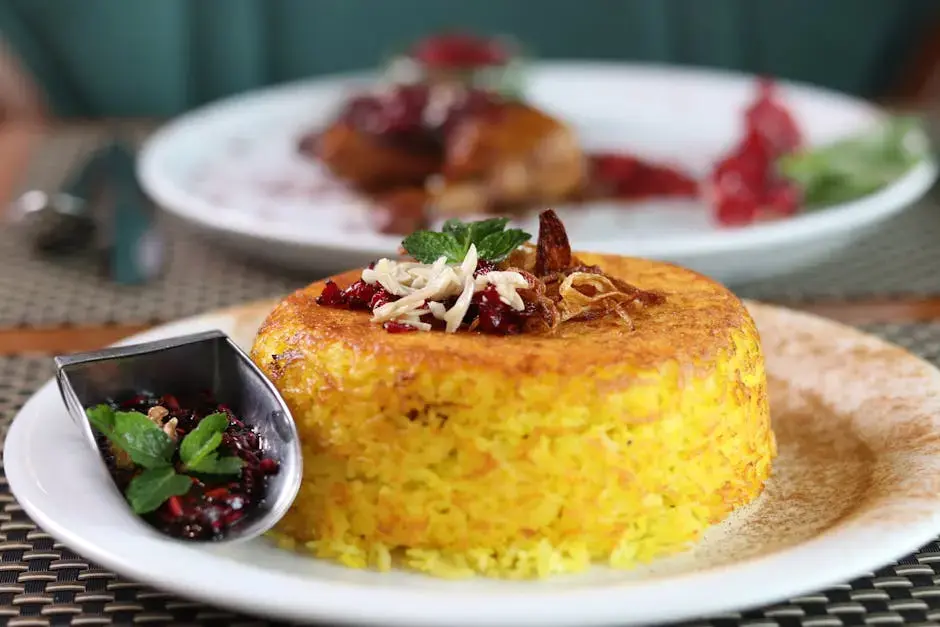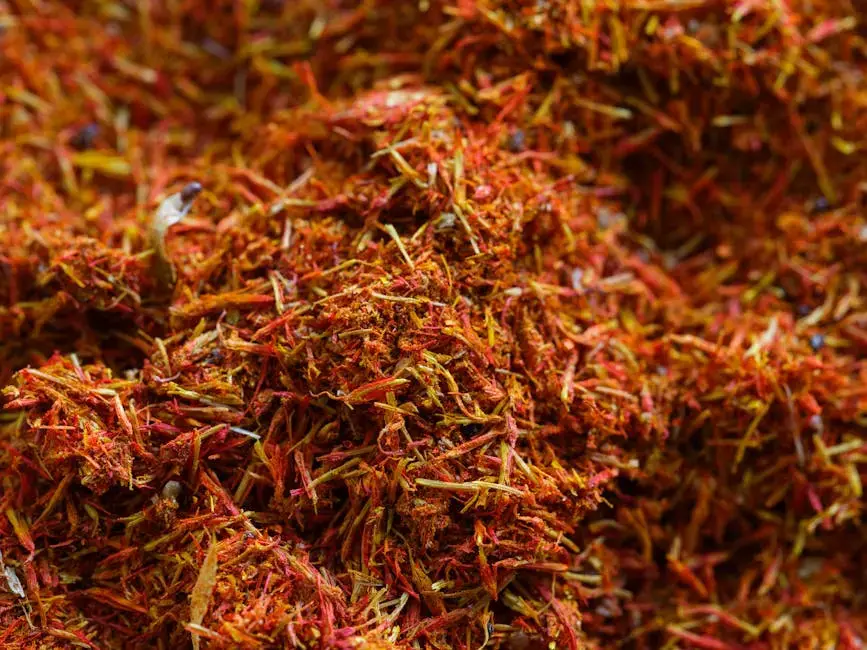8 Healthy Persian Food Ingredients You Need in Your Kitchen
- Chelo
- Jul 10
- 5 min read
Persian cuisine is a wonderful mix of rich flavors and healthy ingredients. Whether you're a seasoned chef or just starting out, incorporating some key Persian ingredients can add depth and nutrition to your meals. In this listicle, we'll explore some must-have ingredients that will elevate your culinary creations.

1. The Versatile Saffron Threads
Saffron is celebrated for its vibrant color and unique taste. A little goes a long way, and it's packed with antioxidants that provide various health benefits. It's great for rice dishes, teas, and even desserts. Using saffron in your kitchen not only adds a luxurious touch to your meals but also brings numerous health advantages. It is known for improving mood and reducing symptoms of depression. The spice is also believed to support heart health by lowering cholesterol and preventing arterial plaque buildup. Its versatility is the secret ingredient in several traditional dishes, so don't hesitate to experiment with it!
When working with saffron, it's important to use it sparingly and soak the threads in warm water or milk before using them. This helps release its color and aroma more effectively. Infuse this fragrant spice into your Persian rice dishes or experiment with traditional desserts like saffron ice cream for that added special touch. In the culinary world, authenticity often lies in the details, and saffron is one such detail that elevates any dish it graces.
2. The Richness of Pomegranate Molasses
Known for its tangy and slightly sweet flavor, pomegranate molasses is a staple in Persian stews and sauces. It's rich in antioxidants and vitamins, making it a healthy choice for salad dressings and marinades. This ingredient can transform ordinary dishes into extraordinary culinary experiences. The sweet-sour profile of pomegranate molasses makes it a fantastic addition to roasted meats, where it acts as a glaze that not only tenderizes but also infuses with a zesty kick. In Persian cuisine, it is notably used in the famous dish Fesenjan, a walnut and pomegranate stew that truly showcases its depth of flavor.
Beyond traditional recipes, consider using pomegranate molasses in your contemporary creations. Try adding a splash to brighten up a vinaigrette or incorporate it into your marinades for vegetables or meats to give them an unforgettable taste. Its rich content of Vitamin C and other antioxidants makes it not only a treat for your palate but also beneficial for your well-being. And if you ever wonder about its role in enhancing your meals, the secret lies in its powerful combination of sweet and tart, inviting you to explore its versatility beyond borders.
3. Nutty Goodness of Pistachios
Pistachios are not just a delicious snack but also an integral part of Persian cuisine, renowned for their nutty flavor and satisfying crunch. They're a great source of protein, fiber, and healthy fats, making them perfect for snacks, desserts, and savory dishes alike. Including pistachios in your diet supports heart health as they contain antioxidants that help decrease cholesterol levels and improve arterial function.
Persian dishes often highlight pistachios in rice pilafs, festive pastries like Baklava, or simply as a garnish for stews. Besides their health benefits, pistachios are a powerhouse of essential nutrients, making them a regular feature in balanced diets. Whether you toss them into morning granola or blend them into a silky pesto, pistachios bring a touch of elegance and nutrition to everyday meals. Why not explore our latest recipes to unlock new ways to enjoy this delightful nut?
4. Flavorful Dried Limes
Dried limes, known as Loomi in Persian, are essential to many traditional stews and soups. This ingredient adds a depth of flavor that enhances any dish with its unique citrusy aroma. Rich in vitamin C, dried limes not only infuse meals with delightful zest but also bolster your immune system, making them a versatile health-enhancing ingredient.
Their intense flavor comes from the natural dehydration process, concentrating the tartness that complements a range of flavors. Ground them into powder for a citrusy rub or drop them whole into simmering pots, where their intense aroma infuses all ingredients with refreshing flavor. Their inclusion in dishes like Ghormeh Sabzi or Khoresh Bademjan highlights their ability to enrich the taste and nutritional content of meals, making them indispensable in Persian culinary creations. If you are eager to explore exquisite Persian stews, discover our collection of soulful recipes.
5. The Sweetness of Dates
Dates have long been celebrated in Persian cuisine as a natural sweetener that offers indulgence without guilt. Packed with fiber and essential nutrients like potassium and magnesium, dates are a healthy addition to desserts, provide energy, and feature prominently as a key ingredient in many Persian dishes like cakes and pastries.
Their versatility shines in both sweet and savory dishes. Use them to enrich oatmeal, add them into smoothies for a natural sweetness, or stuff them with nuts for an energizing snack. Moreover, dates possess a low glycemic index, which helps regulate blood sugar while satisfying your sweet tooth. Incorporate this ingredient to enjoy not only its rich flavor but its remarkable health benefits all year round. Discover innovative ways to enhance your meals with dates in our cooking ideas.
6. Health-Boosting Fresh Herbs
Herbs like parsley, mint, and cilantro are used generously in Persian cuisine, offering much more than just a burst of freshness. These herbs are full of vitamins and antioxidants that support overall health, making them essential to a nutritious diet. In many traditional Persian dishes, fresh herbs are used in abundance, reflecting the vibrant palate of the region.
These herbs brighten up any dish and can elevate the simplest meal. Whether mixed into a salad or used as a base for a flavorful herb sauce, they bring an unparalleled freshness. The balance of flavors achieved with herbs can turn a simple salad into something stunning or transform a traditional stew into a sensory delight. Explore our herbs guide to master the art of using these powerful plants in your culinary adventures.
7. Delicate Rose Water
Rose water adds a subtle floral note to Persian sweets and desserts, enchanting anyone who indulges in its delicately perfumed aroma. Beyond its culinary uses, it is known for calming effects, and anti-inflammatory properties which suggest its historical use goes beyond mere flavor enhancement.
Incorporating rose water into your cooking opens a window to traditional Persian flavors. Use it to enhance ice creams, refreshing beverages, or elegant desserts. Experience how a delicately perfumed touch transforms a dish, transporting you to the gardens of Persia. Whether in rice pudding or Sholeh Zard, roses have always symbolized beauty, a characteristic embodied by the gentle, aromatic nature of rose water.
8. The Coziness of Cardamom
Cardamom, with its warm, aromatic flavor profiles, is a celebrated and cherished spice in Persian cooking. It not only adds a distinct taste to foods but also aids digestion and contains antimicrobial properties. In Persian cuisine, cardamom often serves as the aromatic backbone of teas and desserts where its presence is known to be a perfect harmony.
When ground and combined with other spices in stews, or brewed in hot tea, cardamom entices all senses with comfort and warmth. Try adding it to your morning tea or dessert creations for an inspired twist. Enjoy the multitude of benefits it provides, from improved digestion to its enticing aromatic presence. Embrace the allure of cardamom and its warm, inviting nature with our recipes that celebrate this quintessentially Persian spice.




Comments